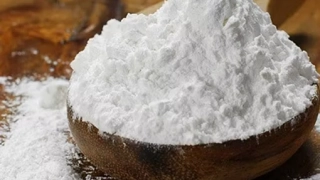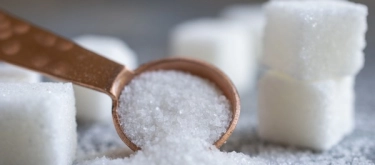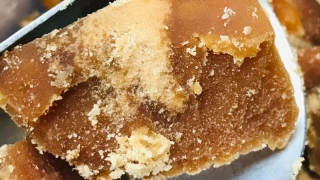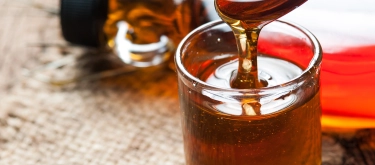Aspartame (E951): Taste Profile, Aroma, Benefits and Health Risks
Aspartame (E951) is a low-calorie artificial sweetener used extensively in the food and beverage industry as a sugar substitute. Discovered in the 1960s, it is valued for its high sweetness potency, allowing for significant sugar reduction in a variety of products.
Aspartame is generally safe for most people. It is not suitable for individuals with phenylketonuria (PKU), as it contains phenylalanine. Allergic reactions are extremely rare.
What does Aspartame (E951) taste like?
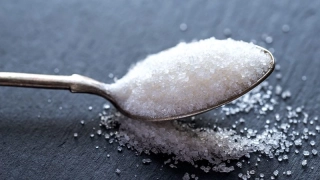
Complete Sensory Description:
-
Taste: Aspartame is approximately 200 times sweeter than sucrose (table sugar). It provides a clean, sweet taste very close to sugar, with a slight aftertaste sometimes described as mildly fruity or slightly lingering, especially in high concentrations.
-
Aroma: Aspartame is odorless in pure form and does not impart aroma to foods.
-
Texture: In small amounts, aspartame has no effect on texture or mouthfeel of finished foods.
-
Appearance: It is a white, odorless, crystalline powder, invisible when dissolved in food or drink.
In-depth Flavor Analysis:
Aspartame’s sweetness profile closely mimics sugar, with a fast onset and lingering finish. It is heat-sensitive and breaks down during prolonged heating, so it is not suitable for baked goods requiring extended cooking. Aspartame may interact with some acidic ingredients, which can slightly alter sweetness intensity or stability. In beverages and tabletop sweeteners, its clean, non-bitter taste is especially prized.
Varieties and Culinary Applications:
Aspartame is used in diet soft drinks, sugar-free chewing gum, tabletop sweeteners, yogurt, low-calorie desserts, and pharmaceutical products. Its high sweetness potency allows for use in very small amounts. Aspartame is often blended with other sweeteners (like acesulfame K) to balance and improve flavor profiles.
Selection and Storage:
Aspartame is available as pure powder, granules, or as part of sweetener blends. It should be stored in a cool, dry place, protected from moisture and high heat. It is stable under dry conditions but loses sweetness if exposed to heat or acidic environments for extended periods.
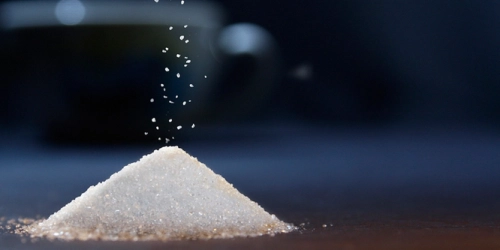
Nutritional Insights:
Aspartame provides negligible calories due to the tiny amounts used. It does not affect blood sugar, making it suitable for diabetics and those on low-calorie diets. However, it must be avoided by people with PKU, as it is metabolized to phenylalanine.
Expert Insights & Culinary Tips:
Food technologists appreciate aspartame for its sugar-like sweetness and clean profile. It is best used in cold foods and drinks or for tabletop sweetening, but not in baked products requiring long heating. Blending with other sweeteners helps round out flavor and enhance stability.
Interesting and Curious Facts:
Aspartame was discovered accidentally in 1965. It is one of the most thoroughly tested food additives worldwide, with extensive studies confirming safety at permitted levels. The requirement for PKU warnings on labels led to greater consumer awareness of genetic disorders.
Harm and Dietary Considerations:
Aspartame is safe for the vast majority of the population at approved levels. People with PKU must strictly avoid aspartame. Very high consumption may rarely lead to headaches or sensitivity symptoms, but evidence is inconsistent. No cancer risk has been conclusively demonstrated in scientific reviews.
Religious Dietary Considerations:
Aspartame is synthetically produced and considered suitable for Halal, Kosher, vegetarian, and vegan diets.
Final Thoughts & Sensory Journey:
Aspartame (E951) offers a clean, sugar-like sweetness with minimal calories, making it a popular choice in sugar-free products and supporting a modern, health-conscious lifestyle.
Resources:
-
Magnuson, B. A., et al. (2007). "Aspartame: A Safety Evaluation Based on Current Use Levels, Regulations, and Toxicological and Epidemiological Studies." Critical Reviews in Toxicology. DOI: 10.1080/10408440600877677
-
Belitz, H.-D., Grosch, W., & Schieberle, P. (2009). Food Chemistry (4th Edition). Springer. ISBN: 978-3540699330
-
Branen, A. L., Davidson, P. M., & Salminen, S. (2001). Food Additives (2nd Edition). Marcel Dekker. ISBN: 978-0824704382
